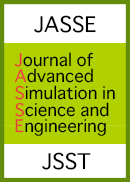Volume 6, Issue 2
Displaying 1-7 of 7 articles from this issue
- |<
- <
- 1
- >
- >|
Regular Section
Papers
-
2019Volume 6Issue 2 Pages 282-297
Published: 2019
Released on J-STAGE: August 31, 2019
Download PDF (2741K) -
2019Volume 6Issue 2 Pages 298-316
Published: 2019
Released on J-STAGE: August 31, 2019
Download PDF (1535K) -
2019Volume 6Issue 2 Pages 317-330
Published: 2019
Released on J-STAGE: August 31, 2019
Download PDF (2316K) -
2019Volume 6Issue 2 Pages 331-353
Published: 2019
Released on J-STAGE: August 31, 2019
Download PDF (3264K) -
Optimization on mechanical structure for material nonlinearity based on proportional topology method2019Volume 6Issue 2 Pages 354-366
Published: 2019
Released on J-STAGE: August 31, 2019
Download PDF (1347K) -
2019Volume 6Issue 2 Pages 367-385
Published: 2019
Released on J-STAGE: October 04, 2019
Download PDF (980K) -
2019Volume 6Issue 2 Pages 386-415
Published: 2019
Released on J-STAGE: November 07, 2019
Download PDF (4938K)
- |<
- <
- 1
- >
- >|
